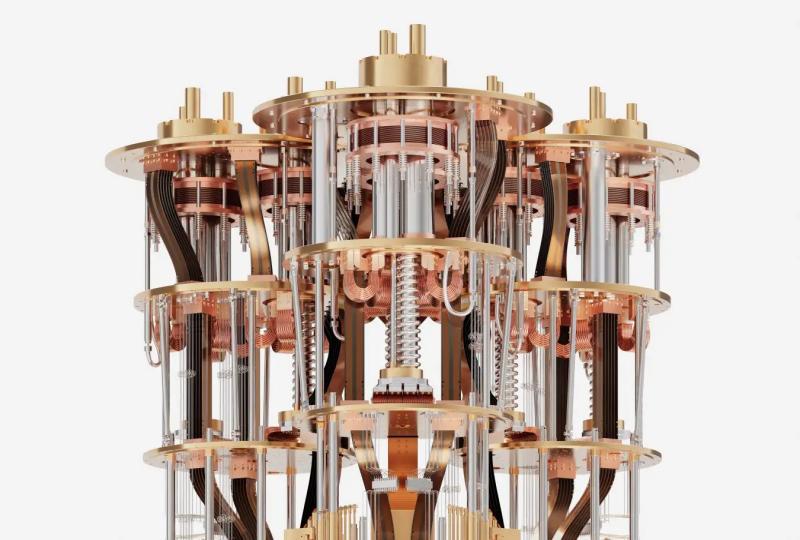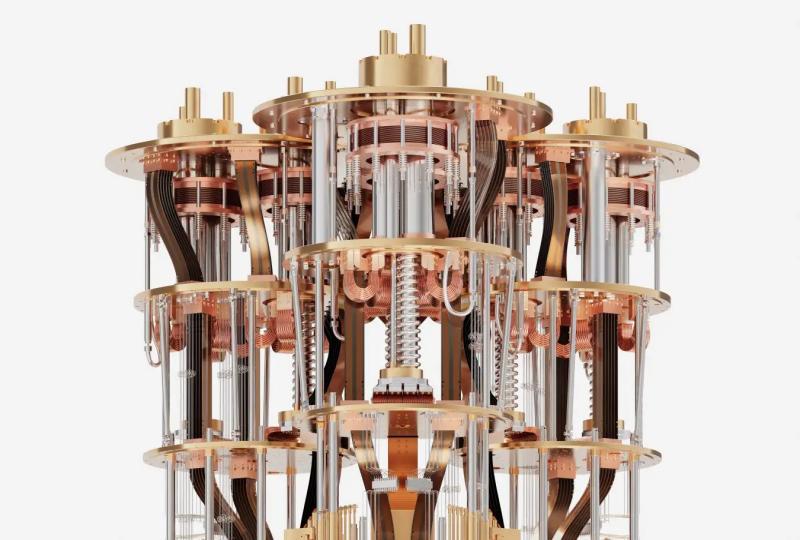Quantum Design: Architecting Tomorrow's Computing Revolution with SpinQ Technology
2025.09.28 · Blog Quantum Design
Introduction: The Dawn of the Quantum Era
In the rapidly evolving landscape of quantum computing, the principles of quantum design have emerged as the cornerstone of technological advancement. As we stand at the threshold of a quantum revolution, understanding and implementing effective quantum design methodologies becomes crucial for realizing the full potential of this groundbreaking technology. SpinQ Technology, as a pioneer in quantum computing innovation, has consistently demonstrated how thoughtful quantum design can bridge the gap between theoretical possibilities and practical applications.
Multiple qubit gates including CNOT, Bell state generator, 2 qubit SWAP, and Toffoli gate with quantum circuit diagrams and state transformations
Quantum design represents more than just engineering - it's the art and science of architecting systems that harness the counterintuitive properties of quantum mechanics to solve problems that are intractable for classical computers. From superconducting qubits to nuclear magnetic resonance systems, quantum design encompasses every aspect of quantum hardware and software development, requiring unprecedented precision, innovation, and understanding of quantum phenomena.
Core Principles of Quantum Design
-
Quantum Mechanical Foundations
At the heart of quantum design lies a deep understanding of quantum mechanical principles. Unlike classical systems that operate on deterministic binary logic, quantum systems exploit superposition, entanglement, and interference to process information in fundamentally different ways. These principles form the bedrock upon which all quantum design decisions are made.
Detailed view of superconducting quantum processor hardware layers and wiring
Quantum design must account for the fragile nature of quantum states. Qubits - the fundamental units of quantum information - exist in superposition states that can be easily disrupted by environmental noise, temperature fluctuations, and electromagnetic interference. This fragility necessitates sophisticated design approaches that prioritize coherence preservation and error mitigation from the ground up.
-
Hardware Architecture Considerations
Modern quantum design requires careful consideration of multiple hardware architectures, each with unique advantages and challenges :
-
Superconducting Qubits: Operating at millikelvin temperatures, these systems require complex cryogenic infrastructure but offer fast gate operations and good controllability
-
Trapped Ions: Providing long coherence times and high-fidelity operations, though with slower gate speeds
-
Nuclear Magnetic Resonance (NMR): Room-temperature operation with educational and research applications
-
Photonic Qubits: Room-temperature operation with applications in quantum communication
SpinQ's approach to quantum design encompasses multiple hardware platforms, with particular expertise in both superconducting and NMR-based systems. This multi-platform strategy allows for optimized solutions across different application domains, from education and research to industrial-scale quantum computing.
SpinQ's Quantum Design Philosophy
Educational Accessibility and Industrial Scalability
SpinQ's quantum design philosophy centers on making quantum computing accessible while maintaining the technical rigor necessary for advanced applications. This dual approach has led to the development of systems ranging from portable quantum computers for educational use to industrial-grade superconducting quantum processors.
Portable quantum computer devices from SpinQ showcasing modern quantum hardware design
The company's educational quantum computers, including the SPINQ Gemini Mini and SPINQ Triangulum series, demonstrate how thoughtful quantum design can make complex quantum phenomena tangible and understandable. These systems incorporate room-temperature operation, maintenance-free design, and intuitive software interfaces - all while preserving the authentic quantum behavior necessary for meaningful learning experiences.
Full-Stack Integration
SpinQ's quantum design approach emphasizes full-stack integration, encompassing everything from quantum processing units (QPUs) to quantum software development frameworks. This comprehensive approach includes:
-
Hardware Design: Custom QPU architectures optimized for specific applications
-
Control Systems: Advanced quantum measurement and control electronics
-
Software Frameworks: The SpinQit programming environment for quantum algorithm development
-
Cloud Platforms: Quantum-as-a-Service offerings for remote access to quantum resources
SpinQ superconducting quantum computer with its core quantum processor unit and control hardware rack
Modular Architecture Design
One of SpinQ's key innovations in quantum design is the implementation of modular architectures that enable scalability and flexibility. This approach allows for:
-
Incremental Scaling: Adding quantum modules to expand computational capacity
-
Fault Isolation: Containing errors within individual modules to improve overall system reliability
-
Flexible Configuration: Adapting quantum systems for specific applications and requirements
Design Challenges in Quantum Systems
Quantum Error Correction and Mitigation
The challenge of quantum error correction represents one of the most critical aspects of quantum design. Unlike classical systems where errors can be directly detected and corrected, quantum systems require sophisticated approaches that preserve quantum coherence while identifying and correcting errors.
A detailed quantum circuit visualization showing qubit states evolving through Hadamard, Pauli-X, and rotation gates with intermediate and final state transitions
SpinQ's quantum design incorporates multiple error mitigation strategies:
-
Surface Codes: Two-dimensional lattice structures for detecting and correcting local errors
-
Dynamic Decoupling: Control pulse sequences to reduce decoherence
-
Error Suppression: Hardware-level design optimizations to minimize error sources
Scalability and Coherence
Maintaining quantum coherence as systems scale represents a fundamental design challenge. SpinQ addresses this through:
-
Modular Design: Breaking large systems into manageable, coherent units
-
Advanced Materials: Utilizing high-quality superconducting materials and fabrication processes
-
Environmental Isolation: Sophisticated shielding and vibration isolation systems
Quantum computing research laboratory with advanced scientific equipment and researchers
Control System Precision
Quantum design demands unprecedented precision in control systems. SpinQ's quantum control systems achieve:
-
Sub-nanosecond timing accuracy: Essential for coherent quantum operations
-
High-fidelity gate operations: Single-qubit gates with >99.9% fidelity
-
Real-time feedback: Adaptive control based on quantum state measurements
Quantum Design for Different Applications
Educational Quantum Systems
SpinQ's educational quantum computers demonstrate how quantum design can make complex concepts accessible. Key design principles include:
-
Visual Feedback: Real-time visualization of quantum states and operations
-
Intuitive Interfaces: Drag-and-drop circuit design and programming environments
-
Robust Operation: Room-temperature, maintenance-free systems for classroom use
Industrial Quantum Computing
For industrial applications, SpinQ's quantum design focuses on performance, reliability, and scalability :
-
High Qubit Count: Superconducting systems with up to 20 qubits and beyond
-
Low Error Rates: Advanced error correction and mitigation techniques
-
Industrial Integration: Hybrid quantum-classical architectures for real-world problems
A cutting-edge quantum computing laboratory with intricate setups of laser optics, electronic control systems, and precision instrumentation
Research and Development Platforms
SpinQ's research platforms embody quantum design principles that enable cutting-edge scientific discovery:
-
Open Architecture: Flexible hardware and software for experimental research
-
Pulse-Level Control: Direct access to quantum control hardware for advanced experiments
-
Collaborative Features: Cloud-based platforms for distributed research collaboration
Future Directions in Quantum Design
Fault-Tolerant Quantum Computing
The ultimate goal of quantum design is achieving fault-tolerant quantum computing. This requires:
-
Logical Qubits: Encoding quantum information across multiple physical qubits
-
Error Correction Codes: Sophisticated codes like surface codes and concatenated codes
-
Threshold Achievement: Maintaining physical error rates below critical thresholds
Quantum-Classical Hybrid Systems
Future quantum design will increasingly focus on hybrid quantum-classical architectures :
-
Heterogeneous Computing: Combining quantum and classical processors for optimal performance
-
Dynamic Resource Allocation: Real-time allocation of computational resources based on problem requirements
-
Unified Programming Models: Software frameworks that seamlessly integrate quantum and classical operations
Quantum Networking and Communication
Quantum design principles will extend to quantum networking, enabling distributed quantum computing and secure quantum communication:
-
Quantum Interconnects: Optical and microwave links between quantum processors
-
Quantum Internet Protocols: Standards and protocols for quantum information exchange
-
Secure Quantum Networks: Unbreakable quantum cryptographic systems
Applications and Impact
Scientific Discovery and Research
Quantum design enables breakthrough applications in scientific research :
-
Molecular Simulation: Quantum computers can simulate complex molecular systems for drug discovery
-
Materials Science: Design of new materials with tailored quantum properties
-
Fundamental Physics: Exploration of quantum phenomena and testing of quantum theories
Financial Technology and Optimization
SpinQ's quantum design principles enable revolutionary applications in finance:
-
Portfolio Optimization: Quantum algorithms for optimal investment strategies
-
Risk Analysis: Monte Carlo simulations with exponential speedup
-
Fraud Detection: Advanced pattern recognition using quantum machine learning
Artificial Intelligence and Machine Learning
The intersection of quantum design and AI represents a frontier of immense potential :
-
Quantum Machine Learning: Algorithms that exploit quantum parallelism for faster learning
-
Quantum Neural Networks: Neural architectures that operate on quantum principles
-
Optimization Problems: Solving complex optimization problems intractable for classical computers
Conclusion: Designing the Quantum Future
Quantum design represents the bridge between the promise of quantum computing and its practical realization. SpinQ Technology's comprehensive approach to quantum design - encompassing educational accessibility, industrial scalability, and cutting-edge research capabilities - demonstrates how thoughtful engineering and design principles can unlock the transformative potential of quantum computing.
SpinQ's compact and modern quantum computer device highlighting advanced quantum computing technology
As we advance toward the era of fault-tolerant quantum computing, the principles of quantum design will continue to evolve and mature. The challenges of maintaining quantum coherence, implementing effective error correction, and achieving practical scalability will drive continued innovation in quantum design methodologies.
SpinQ's commitment to quantum design excellence, evidenced through its diverse product portfolio and global research collaborations, positions the company at the forefront of the quantum revolution. From educational quantum computers that democratize access to quantum knowledge to industrial-scale quantum processors that solve real-world problems, SpinQ's quantum design philosophy continues to shape the future of computing.
The quantum era is not a distant future - it is happening now. Through careful attention to quantum design principles, companies like SpinQ are transforming theoretical possibilities into practical realities, one qubit at a time. As we continue to push the boundaries of what's possible with quantum technology, the principles of quantum design will remain our guide toward a future limited only by our imagination and ingenuity.
About SpinQ Technology: Founded in 2018, SpinQ Technology is a leading quantum computing company dedicated to the industrialization and popularization of quantum computing. With products spanning educational quantum computers, industrial superconducting quantum processors, and comprehensive quantum software platforms, SpinQ serves over 200 institutions across more than 40 countries worldwide.
Featured Content






